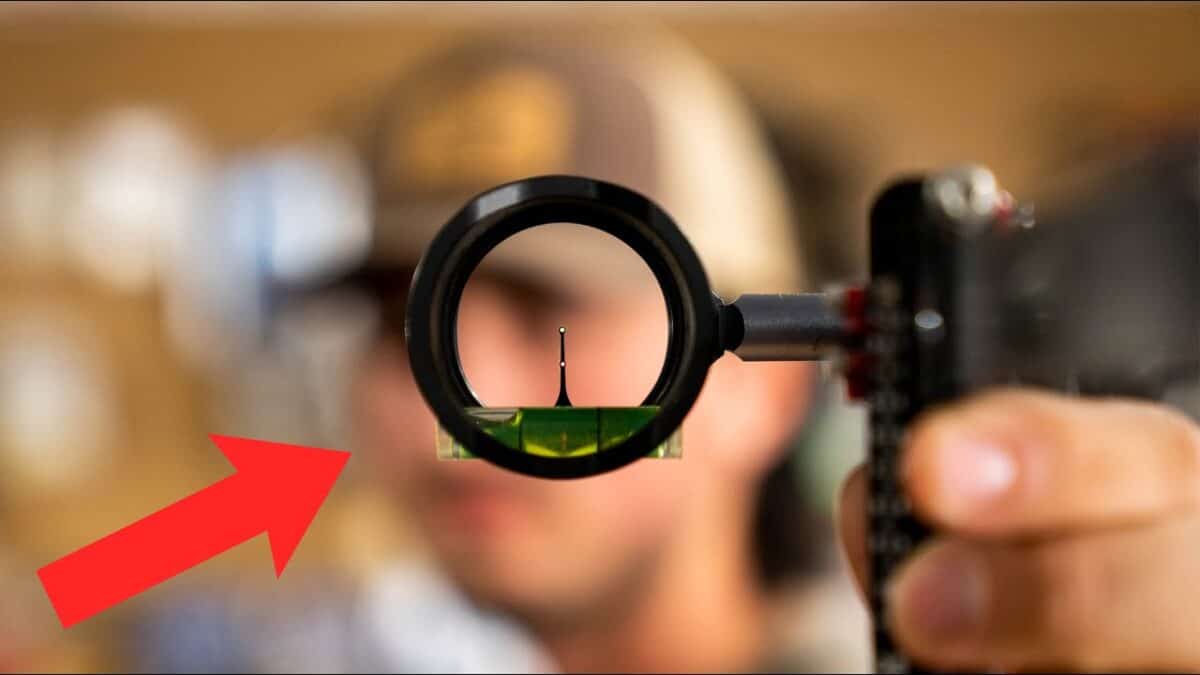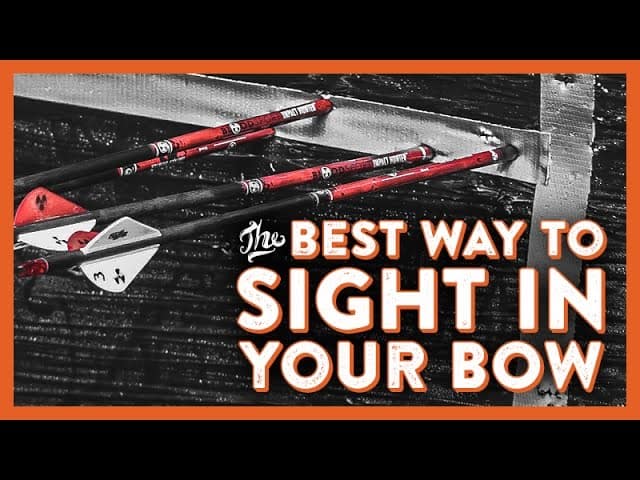From competition shooters to bowhunters, finding the perfect sight for their bow is crucial. One type of sight that is gaining popularity is the hybrid bow sight. This innovative compound bow sight combines the best features of both fixed pin and single pin sights, offering archers the flexibility they need to adapt to various shooting situations.
Overview of Hybrid Bow Sights
Hybrid bow sights are designed to provide archers with the benefits of both fixed pin and single pin sights. They typically feature multiple fixed pins, usually three to five, as well as a movable pin. The fixed pins allow archers to quickly and accurately aim at specific distances, while the movable pin can be easily adjusted for longer range shots.
The key advantage of hybrid bow sights is their versatility. Archers can utilize the fixed pins for close-range shots, such as in dense brush or when hunting from a tree stand. When faced with longer shots, they can simply adjust the movable pin to the desired distance for precise aiming. This flexibility makes hybrid bow sights ideal for hunting situations where distance can vary.
Advantages of using Hybrid Bow Sights
- Improved Accuracy: Hybrid bow sights combine the accuracy of fixed pin sights with the adjustability of single pin sights. This allows archers to make precise shots at various distances, ultimately improving their overall accuracy.
- Adaptability: With a hybrid bow sight, archers can easily switch between fixed and adjustable pins, depending on the shooting conditions. This adaptability ensures they are well-prepared for any scenario they encounter in the field.
- Convenience: Hybrid bow sights eliminate the need for archers to carry multiple types of sights. They provide a single solution that meets the needs of different shooting situations, making it convenient and efficient.
- Timesaving: The ability to quickly adjust the movable pin on a hybrid bow sight can save valuable time in the field. Archers can make necessary changes without the hassle of manually adjusting individual pins.
In conclusion, hybrid bow sights offer archers the best of both worlds by combining the advantages of fixed pin and single pin sights. With improved accuracy, adaptability, convenience, and time-saving features, these sights provide archers with a versatile solution for any shooting scenario.
Understanding the Components of Hybrid Bow Sights
For archery enthusiasts and hunters, having the right equipment can make all the difference in accuracy and precision. One important tool that can enhance your shooting experience is a hybrid compound bow sight. But what exactly is a hybrid bow sight and how does it work?
Examining the pin sight and the scope
A hybrid bow sight is a combination of a pin sight and a scope. The main purpose of a pin sight is to provide multiple aiming points for different distances. It typically consists of several adjustable fiber optic pins, each representing a different yardage. The shooter can choose the appropriate pin for the target distance, allowing for precise aiming. On the other hand, the scope provides magnification, giving the shooter a clearer and closer view of the target.
The hybrid bow sight combines the benefits of both of these components. It offers the accuracy and versatility of a pin sight, allowing for precise aiming at various distances. Additionally, it provides the magnification and clarity of a scope, giving the shooter a better view of the target.
Hybrid bow sight construction and materials
Hybrid bow sights are typically built with lightweight and durable materials such as aluminum or carbon fiber. These materials ensure that the sight is sturdy, yet lightweight enough to not add unnecessary weight to the bow. The construction of the sight includes adjustable mechanisms for windage and elevation, allowing for precise adjustments based on shooting conditions and target distance.
The combination of the pin sight and the scope in a hybrid bow sight offers archers and hunters the best of both worlds in terms of accuracy and visibility. It is essential to select a hybrid bow sight that suits your specific shooting needs and preferences. Whether you are a beginner or an experienced shooter, a well-chosen hybrid bow sight can greatly enhance your shooting performance.
Benefits of Using Hybrid Bow Sights
The world of archery has evolved with the introduction of hybrid bow sights. These innovative tools combine the best features of both fixed pin and single pin sights, providing archers with increased accuracy and improved visibility in various lighting conditions.
Increased accuracy and precision
One of the biggest advantages of using hybrid sights is the enhanced accuracy and precision they offer. With fixed pin sights, archers are limited to shooting at predetermined distances, causing issues when hunting or engaging in target practice at varying distances.
On the other hand, single pin sights allow for precise adjustments based on the target distance but can be time-consuming to adjust in the field. Hybrid bow sights overcome these limitations by offering a combination of fixed pins for quick reference and a single adjustable pin for precise aiming. This allows archers to accurately shoot at different distances without sacrificing speed or precision.
Improved visibility in different lighting conditions
Another key benefit of hybrid bow sights is their improved visibility in different lighting conditions. Fixed pin sights can be challenging to use in low-light situations or when shooting from inside a hunting blind, as the pins can be difficult to see.
Single pin sights excel in these conditions but can be less effective in bright sunlight or when shooting against dark backgrounds. Hybrid bow sights strike the perfect balance by incorporating fiber optic technology for bright and clear pin visibility in any lighting condition. The combination of fixed pins and a single adjustable pin ensures that archers have a clear sight picture, no matter the lighting circumstances.
In conclusion, hybrid bow sights offer numerous advantages for archers seeking increased accuracy and improved visibility. By combining the best features of fixed pin and single pin sights, these versatile tools provide archers with the confidence and precision needed to excel in various shooting situations.
Best Hybrid Bow Sights in the Market
Top hybrid bow sights for beginners
For beginners looking to enhance their shooting skills, there are several hybrid bow sights that are both affordable and user-friendly. These sights often feature a combination of pins and a single aiming dot or reticle, providing versatility for different shooting distances. Some popular options for beginners include the Trophy Ridge React H5 and the Apex Gear Covert Pro.
Premium hybrid bow sights for advanced archers
Advanced archers who demand higher precision and more customization options can opt for premium hybrid bow sights. These sights often come with advanced features like micro-adjustable pins, adjustable brightness, and multiple aiming points. Examples of top-tier hybrid bow sights include the Spot Hogg Tommy Hogg and the Black Gold Ascent Verdict.
Hybrid bow sights offer the best of both worlds by combining the simplicity of fixed pin sights with the added flexibility of a single aiming dot or reticle. This combination allows archers to easily adapt to various shooting conditions and distances while maintaining a clear and accurate aim.
So, whether you are a beginner looking to improve your accuracy or an advanced archer seeking more customization options, hybrid bow sights can be a great investment. With the right sight, you can enhance your shooting skills and take your archery game to the next level.
How to Choose the Right Hybrid Bow Sight for You
Considerations when selecting a hybrid bow sight.
A hybrid bow sight combines the features of both a fixed pin sight and a slider sight. This allows archers to adjust the distance of the pins for various shooting scenarios. When choosing a hybrid bow sight, there are a few things to consider:
- Pin configuration: Hybrid bow sights typically have multiple pins that can be adjusted individually. Consider the number of pins you need based on your shooting style and the distances you typically shoot at.
- Adjustability: Look for a hybrid bow sight that offers ease of adjustment. Some sights have micro-adjustment features, allowing for precise tuning.
- Durability: Ensure that the sight is made from high-quality materials that can withstand the rigors of the outdoors. Look for features like aluminum construction and water-resistant coatings.
Factors to examine before making a purchase.
Before making a purchase, take the following factors into account:
- Budget: Determine your budget range and look for hybrid bow sights that fall within that range.
- User reviews: Read reviews from other archers to get an idea of the pros and cons of different hybrid bow sights.
- Compatibility: Check if the hybrid bow sight is compatible with your bow model and mounting system.
By considering these factors, you can make an informed decision and choose the right hybrid bow sight that meets your specific needs. If you want to learn about fixed pin bow sights, you should take a look here.






